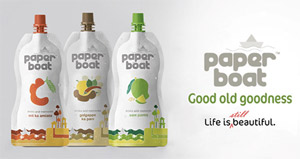The Indian consumer is looking for validation, can PR help?
PR Insight
 A recent coffee and sandwich run to the latest hot bakery in buzzing Cyberhub , was disappointing. The service slow, the line long. It took me nearly 20 minutes to leave with a coffee and no sandwich. My first reaction? To blast the bakery on Zomato.
A recent coffee and sandwich run to the latest hot bakery in buzzing Cyberhub , was disappointing. The service slow, the line long. It took me nearly 20 minutes to leave with a coffee and no sandwich. My first reaction? To blast the bakery on Zomato.
Ultimately, I wasn't upset enough to post a negative review. But many did. A look at the reviews showed several customers had the same set of issues-a result of growing pains for the new outlet.
Welcome to the world of consumer PR in India. After decades of not being considered important, the age of the social media along with liberalisation, has given the Indian customer, more power than he or she has ever had.
The customer is vocal and in no mood to be patronised.
Says Karthik Srinivasan, head of Social @Ogilvy 9 in India, “ Every individual is a media vehicle, now. And it is understandable, and prudent, to use people are carriers of PR messages, besides conventional, mainstream media-driven efforts. In a way, people are the new mainstream media.”
 Giving the example of beverages firm Paperboat, Srinivasan says, “As a brand, Paperboat clearly articulates its stand using nostalgia as the primary theme it buckets all its products under. Regardless of the age groups, nostalgia invokes warm fuzzy feelings, and the brand uses both mainstream media (TV, print ads) and 'people' to spread its message and evoke interest for its products. The brand activates people-media by selecting individuals with a voice, online, on social media and confidently shares its products. This was the domain of super celebrities earlier, now this is accelerated across many more individuals, who try the products and talk about it online, in their own personal media (social media channels) and create interest for Paperboat products.”
Giving the example of beverages firm Paperboat, Srinivasan says, “As a brand, Paperboat clearly articulates its stand using nostalgia as the primary theme it buckets all its products under. Regardless of the age groups, nostalgia invokes warm fuzzy feelings, and the brand uses both mainstream media (TV, print ads) and 'people' to spread its message and evoke interest for its products. The brand activates people-media by selecting individuals with a voice, online, on social media and confidently shares its products. This was the domain of super celebrities earlier, now this is accelerated across many more individuals, who try the products and talk about it online, in their own personal media (social media channels) and create interest for Paperboat products.”
Poonam Ganguly, founder and director, Media Moments, agrees that this change is now across several industries, “We launched multiple smartphones last year where we focussed not only on generating visibility around the phone in the traditional media space but also in the ‘tradigital’ media spaces like The Huffington Post to a Buzzfeed. This backed by influence PR which is driven by new age media, people who are prosumers (proactive consumers), bloggers, influencers, subject matter experts and opinion leaders.”
Putting the consumer in the centre of communications
Carolyn Camoens, senior vice president, south east Asia at WE points out that if consumer PR has to update itself, it needs to pay attention to , “ The wealth of insights we have today to connect with consumers as it relates to their motivations, desires and interests rather than what gender, age or income bracket they fall into.”
This means being authentic.
Says Camoens, “One of the best examples of a brand making a shift towards more authentic communication, for me, is the Coke move from the relentlessly upbeat messaging around the ‘Happiness’ message towards a more real message of ‘Taste the Feeling’ [which was launched with a video chronicling the lifecycle of a relationship — breakup and all; not just the happy moments).”
Carolyn Camoens, WE
Challenges of consumer PR in India
India’s sheer diversity can make a PR strategy that is unified a nightmare. Yet, professionals like Camoens say, “ That’s what makes India an exciting test bed for global consumer campaigns. I see huge opportunity for brands to use India as a place to test the ways in which a campaign could play out across diverse geographical locations with variance in cultural diversity and consumer mindsets.”
One big challenge of consumer PR in India is the highly vocal Indian consumer, who is not ready to be placated. Existing social frustrations can result in online responses towards a brand that are out of proportion to the issue at hand.
Ganguly says , “Not all opinions are fair and right. Brands and businesses today have the risk of online reputation being compromised because of the smallest of issues, which can become a full blown crisis communication for the business. “
Demonetisation, the existing clash between right and left wing views, the growing urban-rural divide; all have led to a simmering undercurrent which makes online responses a potential issue waiting to explode.
Srinivasan says that, “In the current fragmented, people-media driven PR world, brands need to not only continue to earn attention from established media, but also from a lot of people online. And people are opinionated, unlike mainstream media brands that had codes of conduct and worked as professional outlets. Convincing people, hence, is a huge challenge.”
Bridging the Brand-PR-consumer divide
So what does a brand expect?
Ranganath Thota , founder, of crowdfunding site, Fuel A Dream, says, “ Our expectation from PR is to generate measurable impact for our business — specifically this should translate into increased traffic & funding generated on our platform.”
So that’s a clear cut link between business results and consumer PR that the client expects.
- Understand the client innately to bring great stories that crafts the perceptions of the products and services,
- Pick the most appropriate people to communicate it to the right target audience, package the stories in the most appropriate formats,
- Use paid push to ensure that social channels work to the brand's advantage in terms of targeting the right people and
- Constantly check the pulse on what people think about the brand, products or services and iterate changes in real-time.
Karthik Srinivasan
Says Camoens, “Unless you built things like promo codes into a campaign, you couldn’t draw a line directly from earned media to footfall in stores. That’s changing now — primarily because our craft is changing. PR campaigns today are multi-channel and the use of digital and social especially in owned channels gives brands more control over the direct influence that a campaign may have in shaping customer preference and ultimately purchasing decisions. So it’s really for us as communicators to break out of that box and start thinking more creatively about our role in the relationship between the consumer and the brand.”
The first step towards a better relationship Srinivasan maintains is what has always been key for PR: tell a good story. Additionally, he advices that PR needs to take charge and tell the story better.
If you enjoyed this article, you can subscribe for free to our weekly event and subscriber alerts.
Featured

PR professionals share their views on journalists publicly calling them out on story pitches

Auto blogger renders unconditional apology to Value 360 for defamatory posts

Hottest Indian startups of 2020, Paytm, Dreams 11 lead the charge: Wizikey Report




